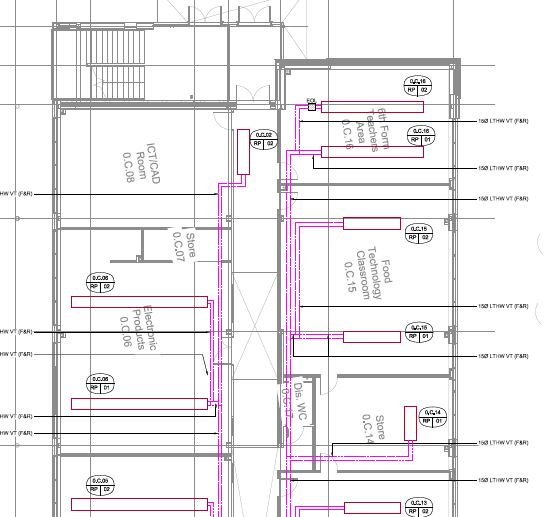Modelling radiating panels in roof?
Hi All,
I am trying to model a radiant panel heating system. There is possibility of modelling it by using ZoneHVAC:LowTemperatureRadiant:VariableFlow object. I think in this method EnergyPlus considers that the InternalSource's area equal to the area of the surface (e.g. roof areas). Is this the right approach or I have to divide the roof into several area and then considering small area as InternalSource? I have already modeled the geometry so the second option can be challenging, is the first approach is equal to the second approach? Please see the pic to see below to find how the panels are distributed,and the whole surface is radiating surface.
Also, in internal source we don't really model the material of the heating panels e.g. Aluminum panels. We just consider the tubing distance and spacing etc, will that make a difference (Panels in Pink red and pipes in pink)?
Last thing, how can we control the LowTemperatureRadiant:VariableFlow? Can we control the supply flow in a zone to control the indoor air temperature?

Thanks
Kindest Regards
Waseem







This is a duplicate question, is it not? https://unmethours.com/question/2344/...
Hi @Benjamin, it is not the same. It is from another direction or more detailed. Thanks